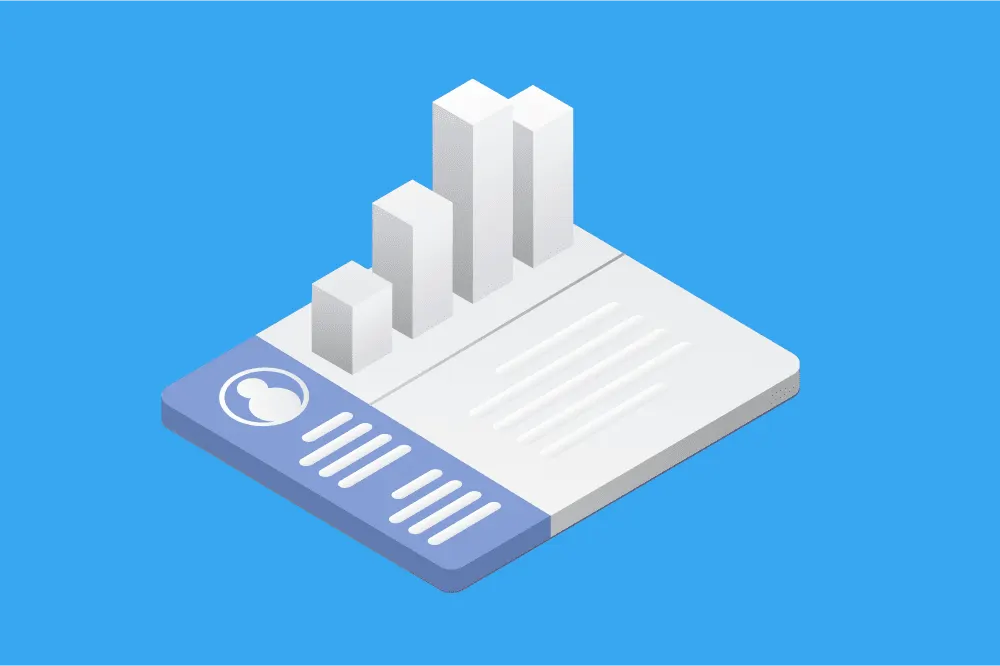Our partner, XM, lets you access a free demo account to apply your knowledge.
No hidden costs, no tricks.

If you are going to trade stocks online, you are more likely to find different stock trading accounts that you can use to buy shares. They vary between CFD trading, direct market access, and other types offered by your stockbroker.
Stock trading is preferred by many investors as there is a huge range of trading options and global corporations’ shares that you can buy and sell. Along with this, stocks are considered a more stable investment choice than some of the other forms of investment available on the market today.
Therefore, it is important to understand the meaning of each stock trading account and the differences between them, which is what we will be discussing in this guide.
We will be taking a look at every stock trading account type available, what they offer, and how you can trade using any of these accounts.

When a company releases its stock to be traded publicly, they are traded in different stock markets, such as NASDAQ and New York Stock Exchange. Traders sell and buy different stocks, and the stock price fluctuates according to demand and supply.
Stock prices are affected by a company’s sales performance and annual releases such as earnings reports. In addition, global events affect the company’s stock price. For example, we saw the influence of the Covid-19 pandemic on the stock price of Google, listed as GOOGL, jump more than 90% between 2020 and 2021. This happened because people had to work from home, meaning they were using Google's products constantly. So when everyone started using video conferencing and chatting to communicate and using Google's platform to do so, this growth started to translate into a higher stock price.
In order to get started in any stock exchange market, you need to set up an online stock trading account, because you need a broker to give you access to the stock markets. Note that it is crucial to find a trustworthy broker.
Reliable brokers all hold one or more high-profile licenses that put strict guidelines on the financial transactions a broker undertakes. This is done to safeguard the traders’ capital.
In addition to that, as a trader, you need to have a wide variety of stock options to be able to select the company's shares that you are most interested in or the ones that will be most profitable for you to invest in.
Most online brokers offer several types of accounts for trading stocks, which vary based on the trader’s portfolio, expectations, and experience, as well as the regulations imposed by local authorities on the broker.
“Where you want to be is always in control, never wishing, always trading, and always, first and foremost protecting your butt.” – Paul Tudor Jones
This is one of the most common trading accounts out there and you are likely to see this type of stock trading account on every broker’s website. A standard stock trading account is a simple way to buy or sell corporations’ stock. It usually requires a moderate minimum deposit of between $100 and $250, depending on the broker’s requirements.
Brokers usually also offer CFD trading in this type of account. CFD (contract for difference) is adopted by many brokers as a faster way of buying and selling market positions.
With CFD trading you never physically own stock, rather you are trading based on the speculation of price changes. When the stock price changes, you make your money depending on the changes in the stock price.
With a standard stock trading account, the spread is a way for the broker to make money. Stockbrokers usually do not charge you a separate fee for opening or closing a market position, as the commission is mostly incorporated in the spread, where your trading agent adds their markup on the real market spread.
This could be a good trading account for beginners, as it does not require significant capital to be deposited by the trader in order to get started. The investors don’t need to provide a huge trading portfolio to use this type of account, rather it can be operated using the minimum requirements set by the broker.
This type of account is related to retirement savings. It is called the “Individual Retirement Account” and is part of the US employment system. This investment account helps American employees to minimize their taxable income, by transferring some of their pre-taxed salaries to their IRA account, which is held as a pension savings account.
On a monthly basis, the US employees contribute a small sum to this account that is created under their identity, and their money remains non-taxed in this account unless they withdraw it.
US investors can trade in stocks using an IRA trading account. In fact, they can conduct any investing or trading activities as long as they do not withdraw their money from the account. Investing using IRA helps investors grow their savings, which can be used once they reach retirement age.
However, there are fees charged for holding such an account, it can be deducted by the holder of the account, whether it is an employer, or an online trading brokerage firm. The charge for an IRA trading account is usually an annual flat rate of between 2% and 4% of the account’s current assets.
This type of account is for US citizens and is good for those employed with a long-term labor contract because they can guarantee a steady stream of funds in this account coming from their monthly salaries. Thus they can trade with money that they do not currently need to live off.
In these types of accounts, a trader is sharing the gains and risks with other traders. Managed accounts are funded by several investors who agreed to select a specific portfolio manager or an account manager to take charge of the investment.
A pool of money is created by combining the funds of several investors, and the selected money manager uses this money to trade. In most cases, this pool of capital includes the manager’s own money as well in order to eliminate any risk of a conflict of interest.
Managed account in stock trading is a good idea if you don’t have sufficient experience in stock trading. You essentially select a money manager based on experience, equity previously managed, and reviews. Several investors go through the same steps of research before entering into an agreement with the portfolio manager, to ensure that both parties' duties and obligations are properly defined.
The portfolio manager also adds their own funds to the pot, to avoid any conflict of interest, and to make sure the manager will have a vested interest in making the account earn as much profit as possible.
There are two types of managed accounts, the PAMM (Percent Allocation Management Module) and MAM (Multi-Account Manager). In the PAMM all investors’ money is treated as a whole amount, sharing the same risk level, and the funds are invested in the same financial instruments.
In the MAM model, the money manager has the flexibility to adjust risk levels and choose different financial instruments for each investor.
In both types, the gains or the losses are distributed among participants according to how much they participated in terms of the percentage invested.
This type of brokerage account is called a “Direct Market Access” (DMA) account and does exactly what the name implies; offers direct market access, and operates differently from conventional brokers. Classically, when you place a market order, it goes to the broker who processes it and then places it on the proper market at a certain price.
However, using direct market access, the investor can bypass the broker and allows traders to trade different stocks in an electronic book that matches buyers and sellers in the market. Despite having to register at the broker’s website, you only have the broker as a bridge to access different markets using the DMA trading account.
Trading stocks with a DMA account is preferred by experienced investors, who can place orders in huge volumes, and use the market spread levels, which can be highly volatile, to make profits. Direct access to trading accounts can be risky because the market can be volatile, and a trader has direct access to it without any of the limitations that might be placed on your trades by a conventional broker.
In addition to that, when you access the market directly the volatility of the stock prices can change very quickly, which can lead to slippage. However, executing orders using a DMA account for trading stocks is a faster way to buy and sell stocks in direct interaction with the market.
Trading stocks using margin accounts is when the trader opens market positions using borrowed funds from the broker. This way, the investor increases their market position to be able to make higher-value trades, which can significantly increase the potential gains of a trader.
Borrowing money from the broker is also called leverage. To simplify that, let’s say you want to invest in company A's stock, you have $1,000 in your account, and using the broker’s leverage of 1:100, the broker lends you money, and you can open a trade worth $100,000.
This way, if the market moves in a favorable direction, your gains are amplified, and once you gain enough money, you pay the broker back along with an interest rate that was set for the loan.
However, if the trade does not go favorably, your losses are also amplified, you might lose your money, and even become indebted to the broker who also lost their money in this trade.
Therefore, a margin trading account is best used by skillful traders who can take higher risks. Experience is required to handle this kind of account, which can lead to a margin call from the broker if the trade goes down too much, thus losing your money and running the risk of becoming indebted to the broker.

Our partner, XM, lets you access a free demo account to apply your knowledge.
No hidden costs, no tricks.
The standard account is usually a better option for beginners. It combines a mixture of moderate offers, and moderate requirements to start. It usually requires a minimum deposit of between $100 and $500 and can be less risky than trading with a margin account.
Find a stockbroker that offers ECN or direct market access accounts, and create your account at the broker’s website. Using a DMA or ECN trading account, you can directly execute different market orders in the books of the stocks' marketplace, in a fast way without the intervention of the broker.
Find a broker that offers stock trading on their platform, create your account and choose the trading account that suits your needs and experience. Make sure the broker is licensed and reliable, otherwise you will be at risk of not getting your money out or any profits that you might have made.